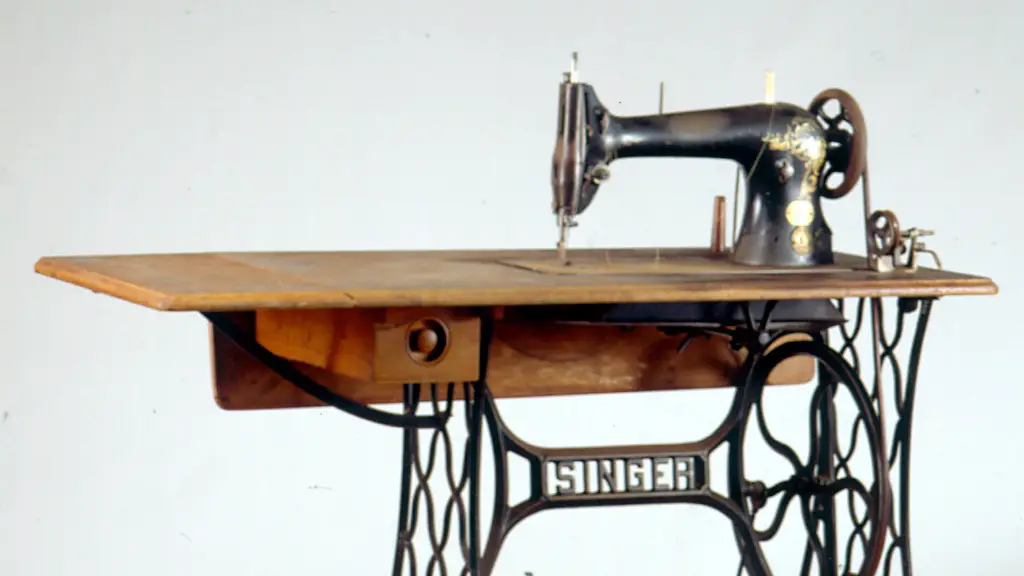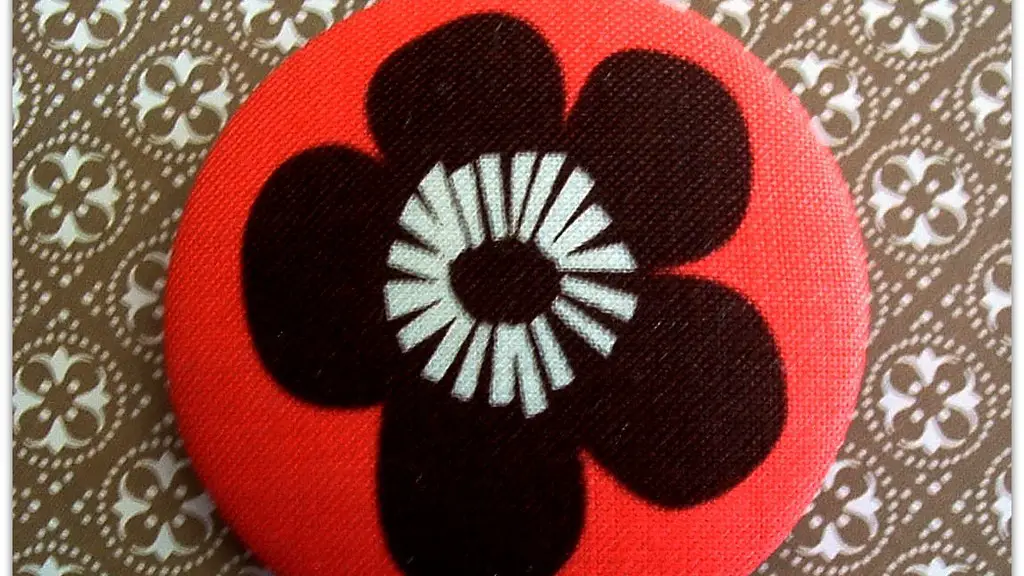The sewing machine thread moving problem
Many seamstresses have faced the frustration of a sewing machine that refuses to move the fabric. Whether the fabric feeding from one end to the other is sluggish or resistant, the correct use of the sewing machine and correct settings can prevent this from happening.
It may be that the feed dogs are clogged with threads, lint, and other residue. If this is the case, gently clean the feed dogs with a brush or vacuum and be sure to replace any missing cams. If the feed dogs are worn down, replace them with new ones.
The needle may be an issue as well. It’s important to use a needle that is specifically suited for the type of fabric the seamstress is working with. If the needle is too small, the fabric will not move and if the needle is too large, it may tear through the fabric. It’s important to always double check the compatibility of the fabric and needle.
It is also important to check the type and weight of the thread used in the project. Thread should match the weight of the fabric, or heavier. If the thread used is too heavy for the fabric, the fabric will resist movement.
Correct machine tension is very important. If the upper tension is too tight, the fabric will not move. Make sure the machine is threaded correctly according to the instructions in the sewing machine manual. And, when sewing with knits, it is important to use a ball point needle as well as an extended feed dog for better fabric control.
When using the zigzag stitch, be sure the tension is correct. If the tensions are not correct, the fabric may bunch up or pucker.
Finally, make sure that the pressure foot is properly adjusted. The appropriate pressure foot helps the fabric move easily and this may be adjusted by the manual.
Conclusion
With the right settings, the right needle and thread, and proper machine maintenance, a seamstress can avoid most problems with a sewing machine that won’t move fabric. Careful attention to these details as well as regular maintenance of the machine will ensure long service and quality stitch work.
Reasons behind the sewing machine not moving
There are a few key reasons why a sewing machine won’t move fabric, but with a few basic tips, those problems can be avoided. The most common reason for a sewing machine not moving the fabric is a lack of lubrication within the machine.
Sewing machines are made of metal that must be kept lubricated for them to function properly. The fabric needs to move smoothly through the machine, and without proper lubrication, this becomes impossible.
Using a lubricant meant specifically for sewing machines is recommended. Oil may also be used, but if any oil gets onto the fabric itself, it will ruin the project. It is also important to make sure the oil is directed in the right places to keep the machine running smoothly.
In addition to lubrication, there could be mechanical problems that could be causing the sewing machine not to move the fabric. This could be caused by a loose belt or screws that need to be tightened, or a lack of power causing the machine to freeze.
The motor or motor drive belt could be slipping, or the bobbin may not be wound correctly. If none of these seem to be the issue, it could simply be a clogged needle or a broken needle.
Finding the right needle
There are many types of needles available for sewing machines, but not all of them will work for all projects. It is important to select the correct needle for the fabric being used, as the wrong needle can cause all sorts of problems.
For more delicate fabrics, a small, thin needle is best. Heavy weight fabrics, on the other hand, require a larger, thicker needle. If the needle is too thin for the fabric, the fabric will struggle to move and the stitches may pull out of the fabric. If the needle is too thick, it can create small holes or even tear through the fabric.
The machine should also be tested with a scrap piece of fabric before use to check that the needle and thread combination are both suitable for the fabric.
Using the wrong thread
Thread that is of an inappropriate weight for the fabric can cause sewing issues. Heavy-duty threads can drag the material and make it difficult for the machine to feed and sew the fabric or even cause them to break.
It is important to use the right thread and needle combination. Lighter thread should be used for lighter fabrics and heavier thread should only be used for heavier fabrics. If a heavy thread is used on thin fabric, it can pull the fabric apart and will cause stitching and fabric problems.
Fabrics that are difficult to sew
Some fabrics are more difficult to sew than others. Knit fabrics are problematic because they stretch and can easily get stuck in the feed dogs or the lower thread tension loop. Velvet and silk also require special attention and can be difficult to sew without the proper tension, needle and thread.
Generally, the best way to approach a fabric that is difficult to sew is to start by using a walking foot. This will help move the fabric through the machine more smoothly and lessen the chances of the fabric getting stuck. Also, tension should be checked to make sure the fabric is moving correctly and that stitches are the proper size.
In addition, using the correct needle and thread is important. Knits should never be sewn with a regular needle, as the point will cause holes in the fabric. A ballpoint needle that has a rounded tip should be used to prevent fabric damage.
Lightweight fabrics or those with lots of texture can be difficult to sew with small machine needles. It is best to use a machine needle large enough to pass through the entire fabric in one pass. This will help the fabric move smoothly and reduce the chances of it sliding around or getting stuck in the machine.
Preventative maintenance
Regular maintenance of the sewing machine is essential. Regular cleaning and professional check-ups should be scheduled as recommended by the manufacturer. This will help ensure that the machine is kept in top working order and that any potential problems that could arise can be addressed before they become serious.
Lint and thread build up can prevent the needle and feed dogs from moving properly. A thorough cleaning of the machine and foot plate should be done regularly, and oiling the machine should be done as per the manufacturer’s instructions.
In addition, the tension should be tested on a regular basis to make sure it is in the correct range for the fabric and thread being used. If the tension is too tight, fabric feeding and stitching issues may arise.
It is also important to store the sewing machine in a dry area and keep it covered to prevent dust and dirt from getting into the machine. This will prolong the life of the machine and help keep it free of unnecessary repairs.




